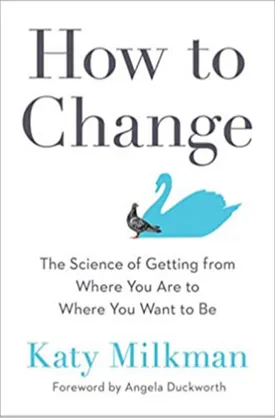How to Change: The Science of Getting from Where You Are to Where You Want to Be by Katy Milkman
It’s easy to sit around and dream about the kind of person you’d like to be, the goals you’d like to achieve, and the life you’d like to lead. But getting from where you are now to the person you want to be isn’t always easy.
In her book, How to Change: The Science of Getting from Where You Are to Where You Want to Be, Katy Milkman uses the latest research in psychology, economics, neuroscience, and other fields to show readers how they can conquer the various challenges - and even harness the opportunities - that lay before them in this journey of personal growth.
With both stories and scientific studies to back up her claims, Milkman demonstrates that the key to successful change isn't necessarily hard work, but rather smart work. She divides the book into five key areas: motivation, commitment device, identity, network, and technology. She then dives deep into each of these five topics in order to explain the underlying science of change.
For example, Milkman's exploration of motivation begins with the understanding that people respond to incentives. While this is a simple concept, she then explains how a person can take advantage of these incentives to create values, beliefs, and habits.
Milkman also provides research-backed tactics to coax out the inner commitment device, which is described as the smart system to help keep you on track to achieve your goals. To find your inner commitment device, Milkman suggests creating schedules, planning rewards, and exploring other strategies to increase accountability.
Milkman then turns her attention to identity and provides a real-world framework for how changes in our views of self can alter our actions. Through this section, she explains how our sense of identity is tightly linked to our ability to resist temptation and pursue our values.
The fourth section of the book addresses the power of our social networks and how important relationships can be in achieving our goals. In this compartment, Milkman examines how to build meaningful relationships and how people can leverage their networks to draw strength from one another.
In the fifth and final part of the book, Milkman discusses the tremendous potential of technologies to possibly revolutionize our ability to change. She cites examples such as computer games and apps to guide users to new lifestyles and improve physical and emotional wellness.
Overall, How to Change offers a comprehensive and empowering view of personal change. Supported by real-world stories and recent scientific findings, Milkman gives readers the tools they need to transform their lives. With Katy Milkman’s help, you can change not just who you are, but where you are going.

